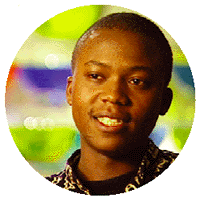 |
||||
Special Panel: "Entertainment-Education and Sports" Game, Set, Match: Sports Can Sell Social MessagesHow can sports be used to promote health messages and how is it related to EE? In his opening remarks, Holo Hachonda (Zambia) explained: "Sports, after all, is entertainment. People watch, and play, for entertainment." Reaching Zambian Men and Youth through FootballHachonda called Zambian youth an "endangered species" because of the HIV/ AIDS epidemic. He shared his experiences working with the Youth Activists Organisation on the Reproductive Health and Football Training Camp program. Men are the target audience for this campaign, said Hachondo, because in Zambia men usually initiate sexual encounters, men are widely seen as leaders in all walks of life, and men view reproductive health matters as a "woman's area." Female empowerment in the area of reproductive health, Hachonda stressed, cannot be achieved without involving men. "Rules of the Game" in Football are Like "Rules of the Game" in LifeTraining camps usually consist of about 50 boys between 14 and 24 years old, who are considered the primary audience. Secondary audiences are parents and church and community leaders. In the 7-day camps, the "rules of the game" of football are likened to the "rules of the game" in life: actions have consequences, and when rules are broken, penalties are incurred. The youth receive football training in the mornings and attend health outreach sessions in the afternoons. Secondary audiences are reached with tailored programs: Fathers of boys through an orientation program (e. g., what it means to be a man with a family), parents through family sessions, and mothers through women's associations and clubs. Other activities include mobile video shows, sexual awareness dramas, and dancing competitions.
Hachonda explained how this campaign has resulted in the formation of anti-AIDS clubs in schools, involvement of churches in community activities, and the involvement of local development associations. Girls are also targeted to empower them with negotiation and decision-making skills. The Netherlands on the Move!In the second presentation, Mariken Leurs (The Netherlands) explained her video project of The Netherlands on the Move! Leurs, a campaign leader with the Netherlands National Sports Federation, described how her project has a goal of increasing active lifestyles among adults. For older adults in particular, injuries due to falls are problematic; therefore, the program aims to improve balance and coordination and increase muscle strength. Participating organizations included the National Heart Foundation, the National Cancer Foundation, as well as various commercial entities. Celebrities in EE ProgramsLeurs explained that her campaign faced challenges on several fronts: Older adults might be embarrassed about their exercising capabilities, and so it was important for a variety of age-groups to be presented on television so that the primary audience would not feel targeted as being "weak" or "in need of help." The project designers also decided to intersperse exercise sessions with vignettes of popular celebrities sharing their stories of leading healthy lifestyles. Well-known sports stars were considered but not primarily pursued, said Leurs, because they felt that the audience might perceive these lifestyles as completely unattainable. Results of the campaign were encouraging: Average market share of the television audience, at 15% (with a single day high of 30%), surprised and delighted broadcasters. Within 2 months of the first show, the audience had grown to more than 100,000 viewers. Funds are currently being raised to continue the program. The WhoZNext CampaignIn the final presentation, Ad Hoogendam and Carla Kolner (The Netherlands) presented their strategies for youth sports participation in the WhoZnext campaign. They explained that, in the Netherlands, it is common for 14 to 18 year olds to lead sedentary lifestyles (several factors are involved, including the limited land space for football fields). Their program aims to encourage youth participation in sports, as well as their involvement in the planning and implementation of these activities. Hoogendam and Kolner explained that youth involved in the development of their own sports programs are more likely to continue their involvement in these programs. Their initiative also encourages collaboration between sports clubs and schools. Furthermore, afterschool sports programs that start immediately after school ends are encouraged. Challenges for EE in SportsAfter the presentations, participants raised several challenges for the use of EE in sports. One is maintaining a balance in the number of messages delivered. While program coordinators appreciate the value of keeping messages focused for greater impact, government or donor agencies may desire to "load the program" with more and more messages, assuming that if some messages will be successful, then many messages should be even more successful. Finally, participants agreed that program coordinators should be able to educate and build efforts among all stakeholders, to keep messages focused and specific, in order to ensure their program's success.
|
![]()

